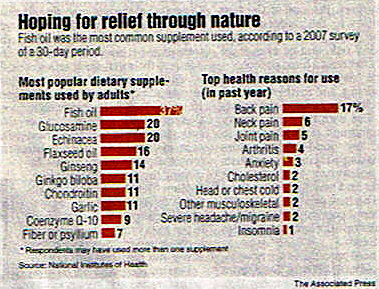Fluoridation Side Effects > Arthritis

Links to Source Documents:
Arthritis |
Fluoridation
Skeletal fluorosis is the best-documented adverse health condition
linked to chronic fluoride intake.
Most of the fluoride people ingest ends up in their bones, and the symptoms of chronic fluoride intake are similar to those for arthritis. According to the National Research Council (NRC), fluoride readily accumulates over time into the crystalline structure of bone and "causes changes in the bone that lead to joint stiffness and pain." – "Fluoride in Drinking Water: A Scientific Review of EPA's Standards," Report in Brief, March 2006
"Chronic intake of excessive fluoride can lead to the severe and permanent bone and joint deformations of skeletal fluorosis. Early symptoms include sporadic pain and stiffness of joints: headache, stomach-ache and muscle weakness can also be warning signs. The next stage is osteosclerosis (hardening and calcifying of the bones), and finally the spine, major joints, muscles and nervous system are damaged." – "Fluoride in Water," An Overview," UNICEF, 1999
"We don't really know why, but we're seeing an epidemic of patients with wearing out of joints in their 40s and even late 30s." – Dr. Barry Waldman, Director of the Center for Joint Preservation and Replacement, Sinai Hospital, Baltimore ("Arthritis starting to affect younger people," The Baltimore Sun, March 9, 2009)
Kathleen M. Thiessen, PhD, who was a member of NRC's Committee on Fluoride in Drinking Water, said: "The possibility that a sizeable fraction of 'bone and joint pain' or 'arthritis' in U.S. adults is attributable to fluoride exposure has not been addressed, although it is plausible, given what is known about fluoride intakes."
Comparing states' fluoridation levels and data for "arthritis-attributable work limitation" of adults (age 45-64) reveals a small but consistent increase in arthritis rates as fluoridation rates increase. Of course there are other factors involved, but fluoridation's effect alone should be enough to ban the practice immediately.

